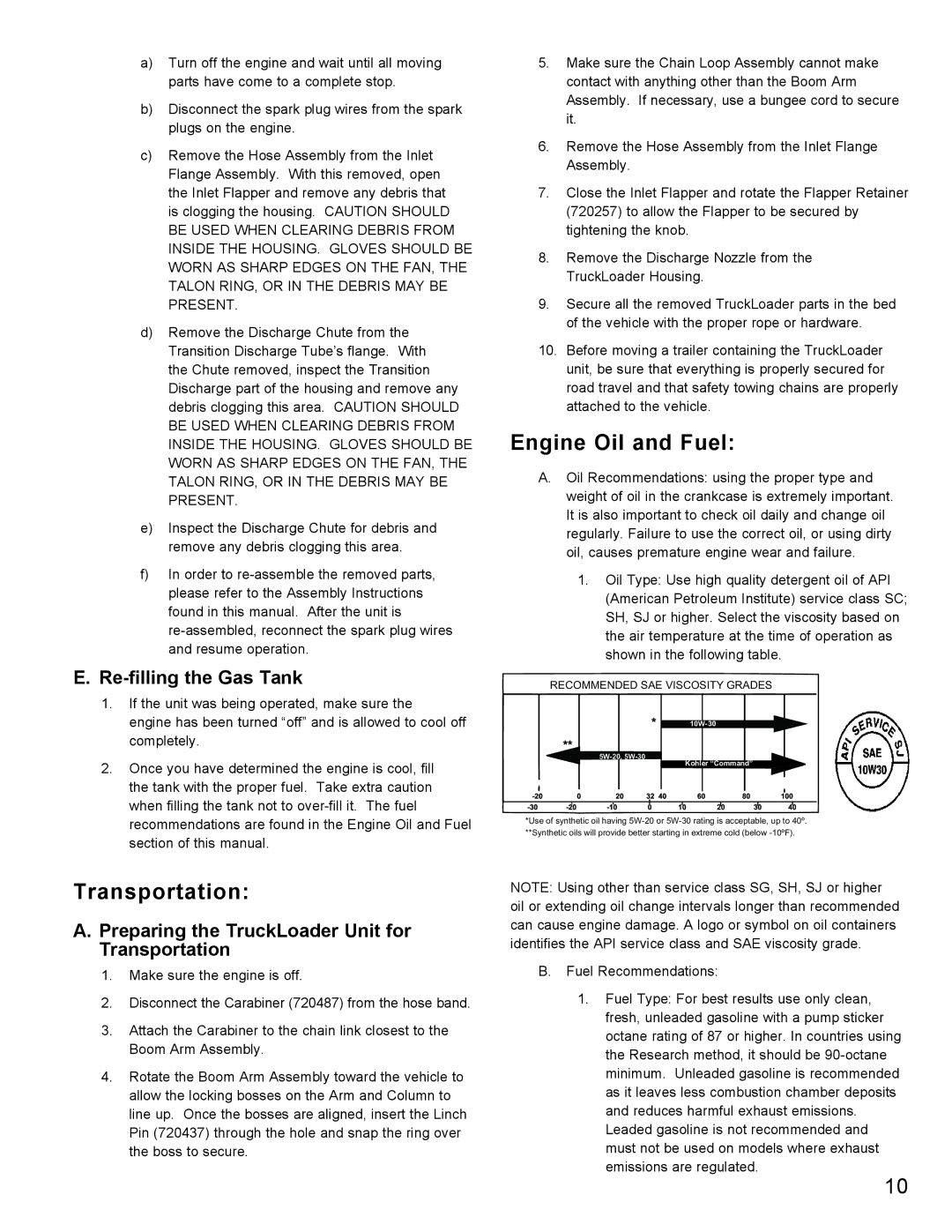8221, 8271 specifications
Little Wonder 8271 and 8221 are powerful outdoor equipment designed to streamline yard maintenance and landscaping tasks. Both models are engineered with durability and efficiency in mind, appealing to both homeowners and professional landscapers.The Little Wonder 8271 is equipped with a robust 8.5 HP engine, ensuring ample power for severe conditions. An impressive feature is its large capacity debris collection bag that minimizes downtime by allowing for extended operation before needing to be emptied. The 8271 utilizes a unique shredding system that efficiently reduces the size of debris, making disposal simple and effective. Its easy maneuverability is aided by thick rubber tires, providing traction on various terrains.
Complementing the 8271, the Little Wonder 8221 model comes with a slightly less powerful but equally efficient 6.5 HP engine. This model is ideal for homeowners or smaller jobs that don't require as much power but still demand performance. The 8221 also features a user-friendly design, with accessible controls that allow for intuitive operation. Its collection bag is designed for quick and easy removal, enhancing user experience and efficiency.
Both models incorporate advanced airflow technology that enhances suction power, allowing them to pick up a variety of debris including leaves, grass clippings, and even small sticks. This technology plays a crucial role in their effectiveness, especially during the fall season when leaf cleanup can be a tedious task. The durable construction of these machines ensures they can withstand the rigors of outdoor work, with high-quality materials used in both the frame and engine components.
Safety features are also a priority in the design of the Little Wonder 8271 and 8221. Equipped with protection guards and emergency shut-off switches, users can operate with peace of mind. The ergonomic handles reduce strain during use and are adjustable to accommodate different user heights.
In summary, Little Wonder 8271 and 8221 are dependable options for anyone looking to enhance their yard maintenance capabilities. Between their powerful engines, advanced debris handling technologies, and user-friendly designs, these models stand out in the landscaping equipment market. Whether tackling large landscaping projects or simple yard work, both machines provide exceptional results and reliability.

